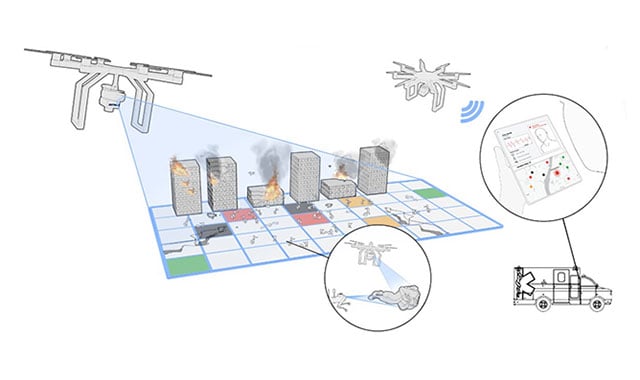Contract Design and Development vs. In-House: How to Find the Best Fit for Your Organization

We are all aware of the technical complexity of medical device design and development. The right resources and expertise can help you navigate the regulatory environment and manage risk.
To support design and development, many organizations may opt to collaborate with a contract design and development partner.
In this blog, we recap takeaways from a recent webinar where we discussed why you may choose to select a contract development organization (CDO) to meet your organization needs and highlight key considerations for how to evaluate CDOs to find the best fit for your project.
Why Are Companies Outsourcing R&D?
What are the reasons companies consider outsourcing a portion of or all their capabilities?
At their core, every company is trying to design and develop the next best thing. In this case, medical device companies are trying to develop products that will improve patient outcomes.
There are other factors to consider though. A new product can support a growth strategy, generate more revenue, help break into a new market, or cut costs to increase profit margins.
Whatever the case may be, encountering headwinds is a guarantee. While the constraints may differ from situation to situation, planning for them is critical.
Here are examples of the most prevalent situations we see. We will get to their options next.
Situation 1: The Virtual Team
This company has a smaller footprint. They may have secured seed funding as an investment in an emerging technology. The funding is limited and tied directly to strict milestones. They need to progress quickly, yet they don't have time to bring in and onboard a full team.
Situation 2: The Expanding Team
This team has developed a great product. They've started to generate revenue and are taking off in the marketplace. What's next?
They have growth plans tied to the expansion of this product line. The team, while incredibly competent, is just too small to manage multiple projects at once and is looking for a partner to help them scale.
Situation 3: The Large Organization
These are large, multinational organizations with distributed teams across multiple sites. Say there is an issue on a production line. They have a capable team but are looking for a fresh set of eyes to find the root cause in a timely manner.
The reasons are varied, but each organization needs more resources but doesn't have the luxury of bringing them in-house.
What Are Your Outsourcing Options?
There are a variety of ways to use outsourcing and partner CDOs to scale resources based on your needs. We know it can be an arduous process, so we've assembled a 10,000-foot view.
Option 1: Individual Contributors
This is a classic approach to expanding your team's bandwidth or skill set. This option doesn't require a long-term commitment or hiring a full-time employee. An individual contractor is part of your team, and you manage their activities on a day-to-day basis.
Option 2: Resource Team
A resource team can fill gaps when you have the lion’s share of the ability in-house. They have expertise in a key area that completes the holistic team required to tackle the task at hand. While given more autonomy than an individual contractor, a project manager on your team is still overseeing the work.
Option 3: Outsourcing the Complete Project
When teams have too much on their plate or want to enter a new market, outsourcing a project may be the way to go.
This scenario is a bit different than the previous two. You are buying the breadth of that team's resources, as well as the depth that comes with the existing group. This includes that team's culture and identity. If you've chosen the right team, you can assume they already work well together.
These teams tend to be market specific. A team that has medical device experience will be aware of potential pitfalls.
Option 4: Co-Development Partners
These partnerships go beyond the execution of a single product or project. This is a strategic alignment between organizations, which can include a portfolio of projects.
The activities involved are the result of thorough strategic planning. There are typically master service agreements, steering committees, and even integrated functions, like IT or quality management systems.
Outsourcing Vs. Insourcing
Now that we know the options, the next question is: outsource or insource?
Why Outsource Medical Device Development?
Missing Knowledge
There is knowledge that you and your team do not possess. You need to fill a knowledge gap with someone who is very capable in this space. You could hire in-house, but you might not know where to begin.
Innovation Wilderness
Depending on your location, you may struggle to find capable talent. This is less important as more people are working from home, but you may need to look for talent externally.
Can't Afford to Hire
You may have short-term funds and can't commit to a full-time or long-term hire.
Can't Afford to Hire Wrong
In this case, you can't afford to hire wrong. Having the right personnel is essential to hitting those critical milestones on schedule. When it's crunch time, you might not have the luxury of onboarding a full-time team member.
Too Many Opportunities
Having too many opportunities isn't a bad problem to have, but it can put a strain on your existing team's bandwidth.
When your list of projects grows and you're not able to keep up with demand, outsourcing a portion of the work may be the solution.
Reasons to Insource Medical Device Development
It's An Investment
Hiring full-time allows you to onboard talent into your company's culture, invest in training, and develop new leaders.
The Value of the Bench
Developing your bench can help buoy your team through the ebbs and flows of demand. It also creates opportunities for mentorship and growth.
Integrated Team
Integrated teams allow a culture of trust and a cohesive team to form.
Control Over Capabilities
Hiring in-house allows you to choose exactly what you want. You're interviewing a panel of people who meet your criteria before finding the right fit. This process allows you to think tactically about filling gaps in your current team and defining areas for growth.
Represents Your Best Interests
Internal hires tend to be more loyal to the team, your projects, and the overall success of the organization.
You've Been Burned Before
If you've been doing this long enough, you have some experiences that didn't go well. The resources you contracted weren't as capable as advertised or they failed to meet key timelines. Try to learn from your past experience so history doesn’t repeat itself.
Across this spectrum of examples of reasons to outsource or insource, you really need to dig deep to understand what your true needs are, both in the short term and long term.
Differentiating CDOs
Assuming you decide to outsource, the first step requires that you have identified your needs for the project at hand. This process usually includes creating a request for proposal (RFP), a statement of work (SOW), and likely a vendor assessment form for you to quantitatively compare your options.
Once you have your vendor’s proposals, you will be able to score each prospect against your metrics. But it's also important to read between the lines and ask your own questions to dig deeper.
For example, you could begin with questions such as: Does their schedule align with your needs? Does the budget pass the sniff test? What does their bench look like? Is it impressive or just checking a box? What capabilities do they have in-house and what do they propose outsourcing?
It's also important to not overlook their relevant experience with the tech you need. Do they dabble or have true expertise? Is their experience dated or are they astute to the latest trends?
Here are three other categories of considerations that dig even deeper:
Consideration 1: Interest and Acumen
It's important to assess, ideally in person, their level of interest in your project. Do they seem to truly understand the core of your problem?
Pay close attention to the questions they ask. Are they trying to get to the root of the problem or keeping the conversation superficial? Do they seem energized by the work? Are they excited and curious? Dismissive?
Credibility and expertise go beyond people. Listen to ideas and gather insights into the projects they are currently managing.
Assess if they are users or creators of the technology? Do they understand the science behind it? Visit their facility. Have an initial face-to-face meeting to gain more insight into their capabilities and see their facility firsthand. This will allow you to determine if they have the right capabilities for your project.
What types of individuals were included on the project team in the proposal? Generalists stay on the team through the entire project and specialists come in for specific needs. How do they develop intellectual property for themselves or for the client?
Consideration 2: Right Process, Right People
Another important consideration is their approach to project management. Are they administrators of project management, role players, or coaches? Find the coaches. These are the team leaders who will understand the strategy of what you're trying to accomplish. They set the tone for the rest of their team and can jump in when the project is not going to plan to realign the trajectory.
Consideration 3: Transaction Vs. Strategic Partnership
Try to understand the layers of the CDO’s you are evaluating. Does their organization align with yours from a tactical, strategic, and visionary standpoint? Do their processes make sense or differ from yours? Is there resonance or friction? Are they involved or active in your technology or investing in the space where your project aligns? Understanding their position and investment will help determine if they are a collaborator or a potential competitor.
Are they interested in being a strategic partner or is their focus solely on completing your project and moving on to the next? Are they amendable to arrangements such as IP or royalty sharing, co-investment, or teaming agreements? This assessment will offer valuable insights into their mindset and operational approach.
Conclusion
In essence, making the decision to insource vs outsource should not be taken lightly. Further, assessing CDO’s based on your upfront needs and examining differentiators during the evaluation process ensures that you identify the optimal fit for your business needs now and in the future.
Related Blogs
BATTELLE UPDATES
Receive updates from Battelle for an all-access pass to the incredible work of Battelle researchers.








